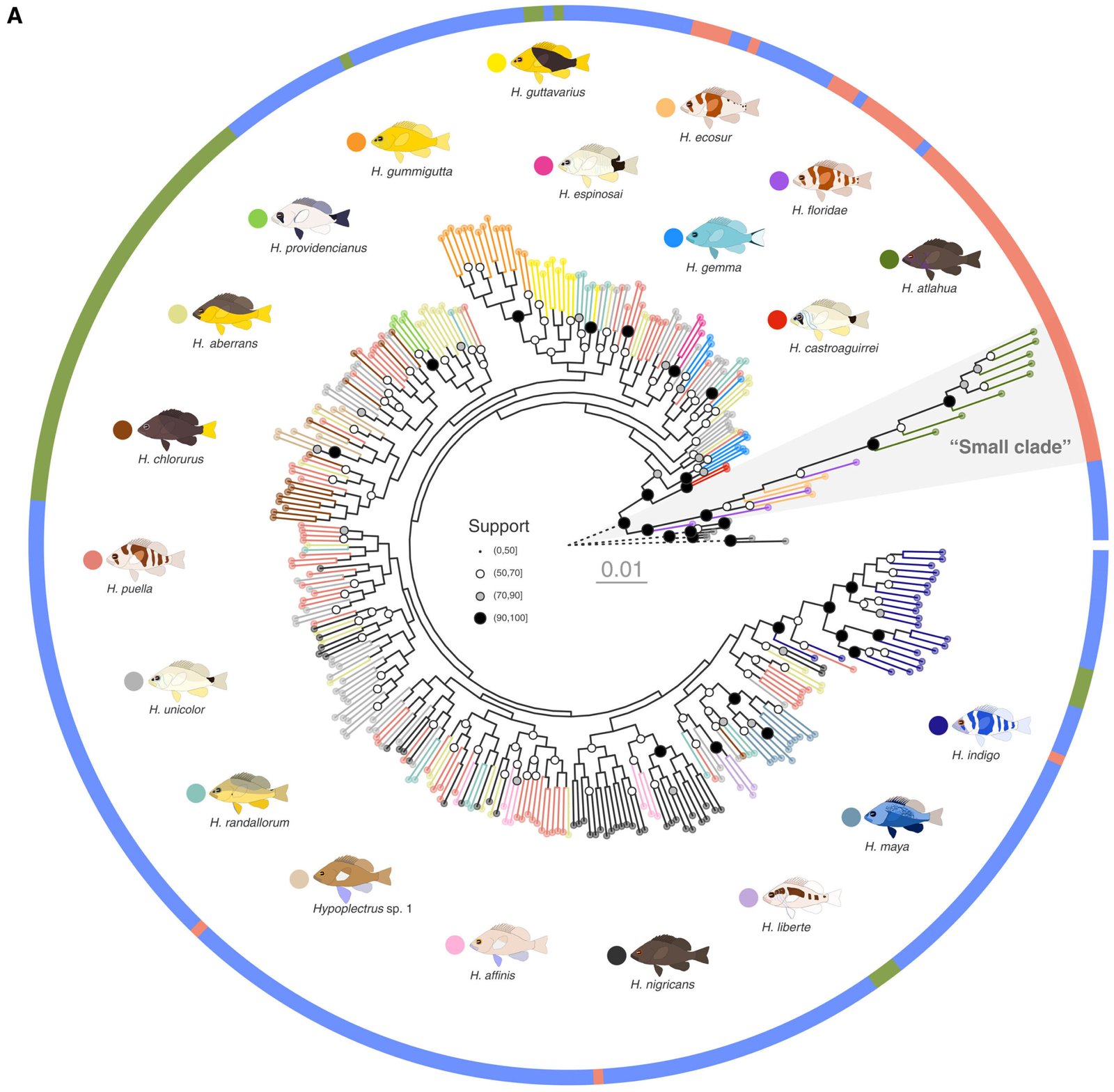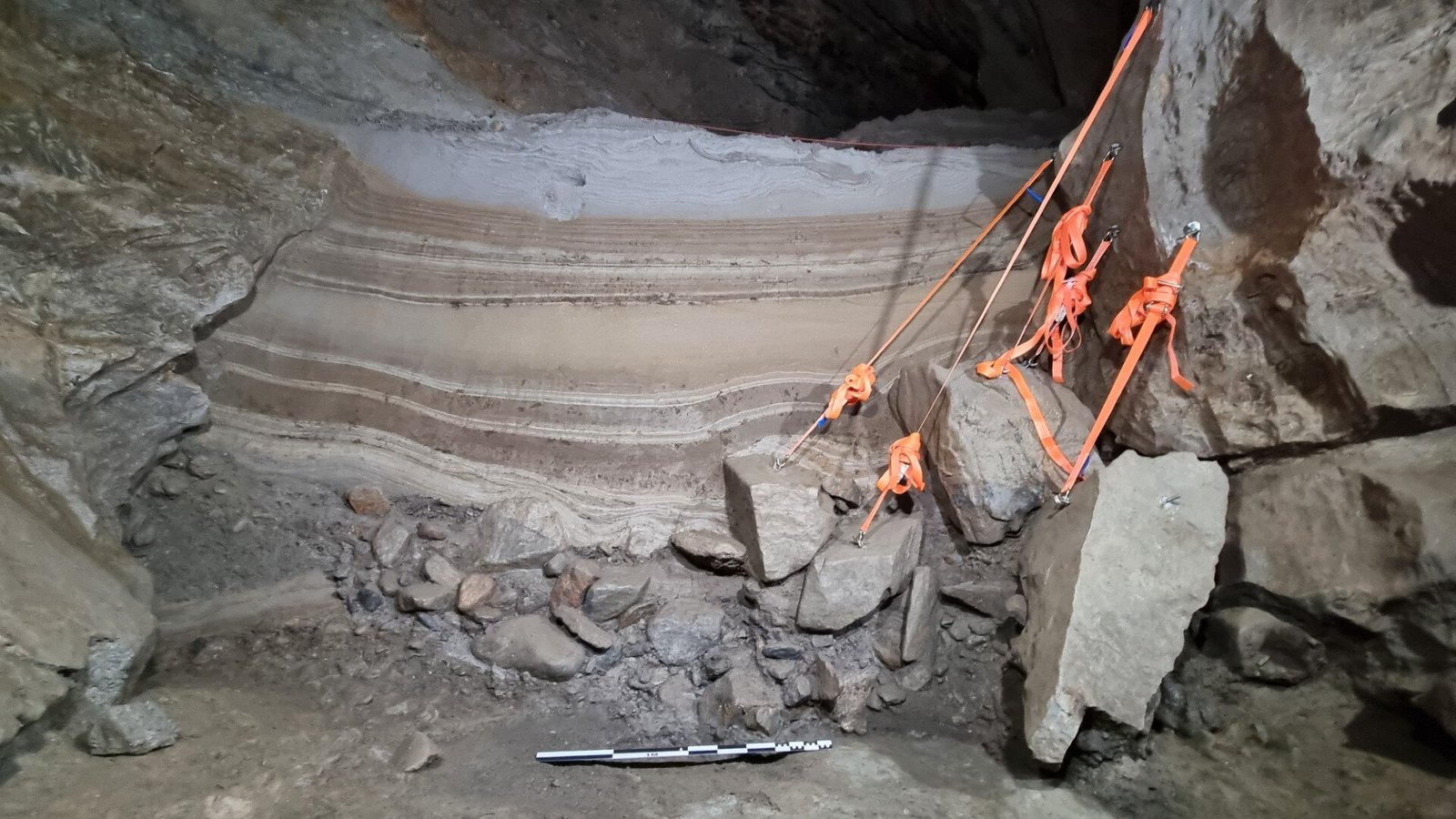
Toddlers can name a few animals. Older kids group animals into categories (birds, fish). And teenagers can sketch a rough tree of life. But when 16 grown-up biologists—five of them affiliated with the Smithsonian Tropical Research Institute—try to explain why colorful reef fishes called hamlets are different species, it gets complicated.
Their results in the journal Science Advances challenge common explanations about using genetic differences to tell species apart.
“Most studies explaining how the different species in a group evolve begin by showing a family tree based on the genetic differences between the species,” said Oscar Puebla, senior author, STRI Research Associate, and professor at the Leibniz Center for Tropical Marine Research (ZMT) in Germany. “But in this case, there is just one genetic split among all 19 species of hamlets.”
Species form when animals adapt to new conditions. Animals that can’t adapt die out and the ones that can adapt reproduce, becoming so genetically different that they can no longer interbreed with other animals in the original group. Maybe the animals were isolated in space, like on the opposite sides of a mountain range; or their paths never crossed because they were active at different times of day. However, overall, no matter the cause, they became genetically different.
In the early stages of species differentiation, animals may still interbreed and only differ in genes that are directly relevant to adaptation—the genic view of speciation. In principle, these genes should allow researchers to reconstruct a family tree.
“To our surprise, when we looked at the genetic data, we realized that no single gene allows us to reconstruct a family tree for the group,” said Martin Helmkampf, senior researcher at ZMT. “And we are sure of this because we screened the entire genomes of 335 fishes. This challenges how people think about what species are and how they arise.”
Co-authors Floriane Coulmance, the first winner of the D. Ross Robertson Postdoctoral Fellowship for Field Studies on Neotropical Reef Fishes, now at the University of Lausanne in Switzerland, and Melanie Heckwolf, former post-doctoral fellow at STRI, developed an innovative underwater camera with a color chart, making it possible to describe the colors of living fish, pixel by pixel, and to compare colors even when the fish were photographed under very different light conditions.
Later, researchers in the group sequenced the entire genomes of 335 fish. Based on the color data and the genetic data, they identified just one gene that seems to be involved in species differences. This gene, called casz1, is expressed in the skin, eyes and brain of hamlets and it is probably responsible for determining color patterns and mate choice. However, even this gene does not allow researchers to reconstruct a family tree for the group. This is probably because species differences are encoded by many genes that act in concert.
“So, in the end, we have to live with the fact that in some cases it is impossible to reconstruct a family tree that differentiates the species,” said Helmkampf.
There is a very similar explanation for speciation in the Heliconius butterflies, studied at the Smithsonian’s laboratories in Gamboa, Panama.
As Owen McMillan, STRI staff scientist and co-author of the study, says, “If there is one thing that we’ve learned from our ability to sequence the genomes of many individuals, it’s just how fluid the boundaries are between what we call species. Hybridization among species occurs a lot and it is turning out to be an important way to rapidly evolve new traits and/or exploit new environments in everything from humans to butterflies, birds, and coral reef fishes.
“It is also a way to rapidly evolve new species, something we see in butterflies, and is probably occurring in hamlets. Of course, this makes sorting things into defined groups challenging, but it is a remarkable testament to how evolution works to create Earth’s biodiversity.”
More information:
Martin Helmkampf et al, Radiation with reproductive isolation in the near-absence of phylogenetic signal, Science Advances (2025). DOI: 10.1126/sciadv.adt0973
Provided by
Smithsonian Tropical Research Institute
Citation:
Genetic study of Caribbean hamlets questions traditional definitions of species (2025, August 4)
retrieved 4 August 2025
from https://phys.org/news/2025-08-genetic-caribbean-hamlets-traditional-definitions.html
This document is subject to copyright. Apart from any fair dealing for the purpose of private study or research, no
part may be reproduced without the written permission. The content is provided for information purposes only.




